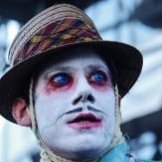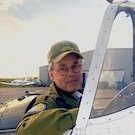Search the Community
Showing results for tags 'Jack'.
-
Hi folks. I've had this one sitting on the shelf with Tamiya AS-12 on it for a while so I decided to finally get some colour onto it. It's amazing how many models are ini a state where paint can be applied and then a day later end up looking almost complete. It's my first real go at trying the AK Chipping Effects fluid besides on accessories. The colours used are lacquers by Mr Color which I absolutely love. Their coverage and applications characteristics are just great. They are a tad smelly though nothing a paint mask can't sort out. In order of application of colour Tamiya AS-12 AK Chipping Effects Mr Color 122 RLM 82 Light Green Mr Color 126 Cockpit Color (Mitsubishi) Mr COlor 124 Dark Green (Mitsubishi) The cowl was masked and then got the same treatment as the main colour. Mr Color actually do a Cowl Color which is #125. The chipping was done by scrubbing and chipping away at the paint with a stump paint brush and a pottery tool. By rolling the pottery tool (kind of like a nail) on it's edge you can get some pretty good random chips over large, flat area. The gloss a Tamiya X-22 thinned with lacquer thinner. One thing I do after I've put it down is to hit it with neat Tamiya Lacquer thinner. It ends looking like glass and is super smooth, excellent for decal application. The underside grey goes on tomorrow. Thanks, Michael
-
Hi Everyone. I have just finished my OOB build of 1/48 Hasegawa Mitsubishi J2M3 Raiden, (Serial No. 3008), captured on the emergency airstrip at Dewey Boulevard, Manila in the Philippines. Hope you enjoy the pic`s, thanks for looking Cheers
- 17 replies
-
- 37
-

-

-
Hi, Old kit - not produced since years. The Tamiya's 1/72 Mitsubishi J2M3 Raiden (Jack) in markings of Tainan Air Corps of Imperial Japan Navy, Taiwan 1944. Pilot Lt.Yoshihiro Aoki (markings from box). I only outdust her and softer decals, add some part of missing number from one side of rudder, cover with Vallejo matt varnish (not so well mixed to produce a bit satin effect ) I left original Tamiya's very dark hinomarus. This is my another very old model - plus fourty years from construction. I remember that I added mach later then I did model the exploitation/weathering - but it was still before 1980....Really - I made this model when I was going to school (age of ~16) - now my grandaughter will go school this year. So... something had happend inbetween - about 400 other models among other things. Comments welcome Regards Jerzy-Wojtek
- 3 replies
-
- 3
-

-
- Mitsubishi J2M3
- Raiden
-
(and 1 more)
Tagged with:
-
Hi folks,with the 1/24 Hurricane finished and only a much smaller mustang on the go I thought I would try to re-visit my old scale of 1/48,I got this kit at Sunderland,s air museum a few weeks ago for the pricely sum of £7.all fully sealed and with the novelty of a motor and base.I was suprised by the recessed lines as I have come across other older Tamiya kits that featured raised details the kit is up to tamiya,s usual high standard with a seated and standing figure so with two other 1/48 builds gone west since joining BM let,s hope its third time lucky!
-
Mitsubishi J2M3 Raiden, (Jack) 1:32 Hasegawa History The J2M was designed by Jiro Horikoshi, creator of the A6M Zero to meet the 14-Shi (14th year of the Showa reign, or 1939) official specification. It was to be a strictly local-defence interceptor, intended to counter the threat of high-altitude bomber raids, and thus relied on speed, climb performance, and armament at the expense of manoeuvrability. The J2M was a sleek, but stubby craft with its over-sized Mitsubishi Kasei engine buried behind a long cowling, cooled by an intake fan and connected to the propeller with an extension shaft. Pilot visibility was poor, but a domed canopy introduced later in production partially alleviated this concern. Teething development problems stemming from the Kasei engine, unreliable propeller pitch change mechanism and the main undercarriage members led to a slowdown in production. A continual set of modifications resulted in new variants being introduced with the ultimate high-altitude variant, the J2M4 Model 34 flying for the first time in August 1944. It had a 1,420 hp Kasei 23c engine equipped with a turbo supercharger (mounted in the side of the fuselage just behind the engine) that allowed the rated power to be maintained up to 30,000 ft. Two upward-aimed, oblique-firing (aimed at seventy degrees) twenty mm cannons, mounted in the German Schräge Musik style, were fitted behind the cockpit with the four wing cannons retained. Unresolved difficulties with the turbo supercharger caused the project to be terminated after only two experimental J2M4s were built. The first few produced J2M2s were delivered to the development units in December 1942 but severe problems were encountered with the engines. Trials and improvements took almost a year and the first batch of the serial built J2M2 Model 11 was delivered to 381st Kokutai in December 1943. Parallel with the J2M2, production of the J2M3 Raiden Model 21 started. The first J2M3s appeared in October 1943 but deliveries to combat units started at the beginning of February 1944. The Raiden made its combat debut in June 1944 during the Battle of the Philippine Sea. Several J2Ms operated from Guam and Saipan and a small number of aircraft were deployed to the Philippines. Later, some J2Ms were based in chosen airfields for defending these areas and fighting against Soviet Naval Aviation units. Primarily designed to defend against the Boeing B-29 Superfortress, the lack of a turbocharger handicapped the aircraft at high altitude. However, its four-cannon armament supplied effective firepower and the use of dive and zoom tactics allowed it to score occasionally. Insufficient numbers and the American switch to night bombing in March 1945 limited its effectiveness. Two captured J2Ms were U.S. Technical Air Intelligence Command (TAIC) tested using 92 octane fuel plus methanol, with the J2M2 (Jack11) achieving a speed of 655 km/h (407 mph) at 5,520 m (17,400 ft), and J2M3 (Jack21) achieving a speed of 671 km/h (417 mph) at 4,980 m (16,600 ft). The Model This kit was originally released in 2011 as one of Hasegawas 70th anniversary release schedule. This version is released as a limited edition with the markings of aircraft from the 302nd Flying Group. Since the moulds are still fairly new there is no sign of wear, so no flash and only one or two moulding pips too. The moulding is very nicely done, with fine recessed panel lines and fastener details as we’ve come to expect from Hasegawa. There are eight sprues of grey styrene and three of clear plus four vinyl retainers. The instructions are relatively clear and easy to read, in an A4 sized booklet format. The build starts with the cockpit and the instrument panel, which is attached to the forward bulkhead has moulded instrument bezels, but uses four blocks of decals for the faces. Depending on how these settle it might be an idea to fit each face separately, much like using an Airscale set. A drop of Aqua gloss or Kleer can be used to seal the decals, with the added advantage of drying to look like the instrument glass. The seat bucket is fitted with a support arm each side whilst the rear bulkhead is adorned with the seat adjustment bracket, adjustment handle, headrest and rear armoured plate. The radio set is assembled from four parts and fitted to the rear shelf, which is then attached to the rear of the bulkhead, with the seat assembly attached to the front. The sidewalls have well defined details moulded onto them and this is enhanced with additional parts and decals. The cockpit floor is fitted with the a console on the port side which also has a couple of smaller parts fitted, followed by the throttle lever on the port side floor, rudder pedals, joystick, undercarriage and flap levers on the starboard floor. The sub-assemblies are then fitted together, creating the sturdy cockpit structure. There are two parts that look like harness attachments fitted one per side of the headrest support structure, but the harness will need to be sourced from an aftermarket company as it is not included in the kit. What the kit does include is a very well moulded multi part pilot, with front and rear torso, separate legs and arms, including an alternative right arm plus three styles of head, one with a mask and oxygen hose, one with the leather helmet open and one with the helmet fastened up. Fitted with the separate parachute pack and after a careful painting session it will make a nice addition to the completed model no matter what flying state it is in. If you’re not going to use the pilot then Hasegawa have provided a separate seat cushion to be fitted. With the cockpit and pilot assembled it’s onto the fuselage. There are five bulkheads of various sizes and shapes to be fitted to the starboard side followed by the cockpit assembly. Inside the port fuselage a square hole has to be opened up and a lever assembly passed through, I believe this may be a canopy opening lever and only used on two of the aircraft options. The fuselage can then be closed up. The wing assembly begins with the assembly of the front spar, rear bulkhead and adjoining structure. This is then attached to the single piece lower wing section with the spar just aft of the wheel wells. There is also a block to be attached between the well bays and two strengthening spars attached to the outer sections of the wing. Before fitting the upper wing sections it should be decided whether the external fuel tank is going to be used or not as the flashed over holes will need to be opened up in the lower wing. On the insides of the upper wing sections the gun troughs also need opening up. The upper wings can now be attached to the lower wing and two clear parts, which I presume are some form of formation lighting are fitted to the top of each upper wing. The fuselage assembly is attached to the wing assembly, whilst the two part horizontal tailplanes are attached to the rear fuselage. The gun barrels, gun fairings, pitot probe and clear navigation lights are now attached. Next up is the assembly of the main undercarriage, each made up of the main oleo, two part scissor link, two part tyre, poly retainer, inner and outer hubs and main bay door. The inner doors are attached to the fuselage with their associated retraction linkages while the outer doors are fitted to the outer edge of the bay adjacent to the oleo attachment. The tail wheel, tail cone and a pair of lower wing panels are attached, followed by the main undercarriage assemblies. The optional drop tank consists of two halves with separate horizontal tail fins. Once complete it can be attached to the aircraft, between the undercarriage bays. With the main structure complete it’s on with the powerplant. Firstly the modeller will need to decide which of the two types of propeller blades to use, either the standard type or the high performance type. Each of the separate blades are then fitted to the hub and enclosed with the spinner, while to the rear a locating propshaft is attached. The cowling is then completed with an air intake fitted to underside of the single piece cowling and two blanks to be fitted to the upper machine gun trough. The internal structure is then assembled from the ducting, fixed stator with poly retainer fitted and rotating fan blades. This structure is fitted to the inside of the cowling. The engine is made up of the front and rear cylinder banks, two sets of valve rods at the front plus the intake and exhaust manifolds to the rear. The completed engine is then attached to the fuselage followed by the cowling and finally the propeller. The build continues with the attachment of a clear “armoured windscreen” and support structure to the upper decking between the cockpit and the cowling, plus optional Type 4 or Type 98 gun sight. The main windscreen is fitted out with a pair of grab handles, and then fitted to the front of the cockpit once the upper deck assembly has been attached. The two separate gun bay panels for the upper wings are fitted followed by the aerial and side window support structure, side windows, and canopy, and that is the build complete. Decals The quite large decal sheet provides markings for three aircraft, each of the 302nd Fighter Group. the colour schemes are the same for each aircraft and only the serial numbers changed and the 1st option having a yellow band around the rear fuselage. The decals are all nicely printed, in good register and with very little carrier film, even around the instrument blocks. While the decals appear to have been gloss once they seem to have lost the gloss coat and are now quite matt. They should settle well though on a good gloss coat with suitable setting and softening solutions. followed by a coat of gloss varnish followed by a coat of matt varnish. Conclusion I’ve always liked the Raiden, and this is very nice looking kit of a great looking aircraft. This will also make for a good alternative to the complex ZM release and also a fair bit cheaper. If you are going to comment on this review, please don’t bang on about Hasegawa pricing, as this one is actually quite reasonable. The detail is superb out of the box, but if you want to go the extra mile then the usual companies already have aftermarket parts for this kit. So if you fancy having a Raiden in your collection you can’t really go wrong with this one. Highly recommended. Review sample courtesy of UK distributors for
-
Source: http://www.zoukeimur...tml#Ipms1211Lst After two years of research next Zoukei-Mura 1/32nd Super Wings Series will be a Mitsubishi J2M Raiden "Jack. V.P.
- 11 replies
-
- 1/32
- Mitsubishi
-
(and 4 more)
Tagged with:
-
Pretty well there - beautiful kit to build - hopefully to be published in a future edition of Military in Scale: Iain







